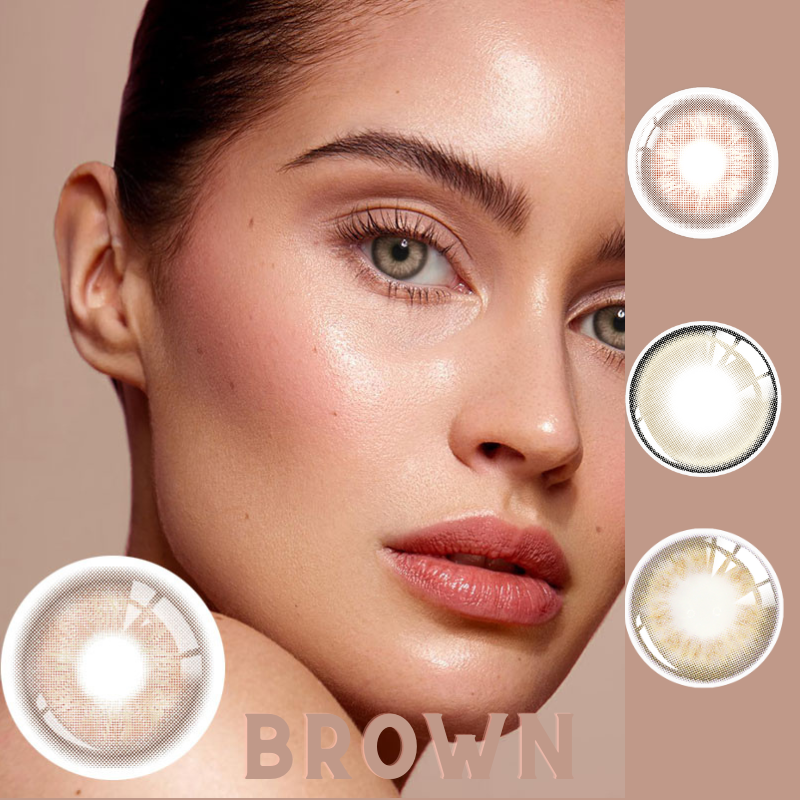Table of Contents:
When it comes to wearing contact lenses, the focus is often on ensuring clear vision and comfort. While many people are aware of the importance of getting the correct lens prescription, few consider a critical factor that can significantly impact their experience: the diameter of the contact lens.
The diameter of a contact lens, often abbreviated as "DIA" on your prescription or lens packaging, plays a crucial role in how the lens fits your eye. It affects not only your comfort but also your eye health. In this article, we will explore what contact lens diameter is, how it is determined, and why it’s essential to get it right. We’ll also address some common questions about contact lens diameter to help you make informed decisions about your eye care.

What is the Diameter of a Contact Lens?
In the simplest terms, the diameter of a contact lens refers to the width of the lens from one edge to the other, measured in millimeters. This measurement is crucial because it determines how much of your eye the lens will cover. Soft contact lenses, the most commonly used type, generally have diameters ranging from 13.80 mm to 14.50 mm, with 14.00 mm and 14.20 mm being the most popular options available.
A properly fitting lens should cover your cornea, the clear dome-shaped surface that protects your eye, without spilling over onto the white part of your eye (the sclera). At the same time, the lens must allow for some movement as you blink, which helps with tear circulation and prevents the lens from sticking too tightly to your eye. A lens that is too small might not cover enough of the cornea, while one that is too large could limit the natural movement of your eye and cause discomfort.
How to Determine the Right Contact Lens Diameter
Finding the right diameter for your contact lenses is not something you can do on your own. The measurement of your cornea’s width and shape must be determined by an optometrist or an ophthalmologist. During a comprehensive eye exam, your eye doctor will use specialized tools to measure the size of your iris and cornea. These measurements are critical for ensuring that the lenses prescribed fit correctly.
Most commercially available contact lenses come in pre-set diameters. However, the range of diameters offered by major contact lens brands typically covers the needs of most people. Your eye doctor will select the diameter that provides the best fit based on your eye’s size and shape, ensuring that it works in harmony with other factors, such as the base curve of the lens.
It’s important to remember that the diameter works in conjunction with other measurements, like the base curve, to create the ideal fit. A lens that is too loose or too tight can cause problems ranging from mild discomfort to more serious eye health issues.
The Importance of Choosing the Correct Diameter
Why is it so important to get the diameter right? An incorrect lens diameter can cause various problems, including irritation, discomfort, and even more serious complications like corneal damage or infection. Let’s break down some of the common issues that can arise from wearing lenses with the wrong diameter:
Lens Too Small: If the diameter of your lens is too small, the lens may shift excessively when you blink or move your eyes. This movement can lead to irritation as the lens rubs against your eyelid or cornea. A lens that moves too much can also make it difficult to see clearly, as the lens may not stay centered on the eye.
Lens Too Large: On the other hand, if the lens is too large, it might fit too tightly on the eye, restricting the natural movement of the lens and potentially reducing the flow of tears underneath it. This can lead to dryness and discomfort. Additionally, a lens that is too large can cause the edges of the lens to press into the sclera, leading to irritation and redness.
Getting the correct diameter ensures that your contact lenses sit comfortably on your eye, provide clear vision, and promote healthy tear circulation. Without a proper fit, you might experience eye strain, headaches, or even blurred vision.
Common FAQs About Contact Lens Diameter
Here are some frequently asked questions that can help clarify how contact lens diameter works and why it matters:
What is the typical diameter range for soft contact lenses?
Most soft contact lenses have diameters ranging between 13.80 mm and 14.50 mm, with the most common sizes being 14.00 mm, 14.20 mm, 14.30 mm and 14.50 mm. These sizes are designed to fit the majority of people.
Can I wear lenses with different diameters for each eye?
It is rare, but some individuals may require different diameters for each eye due to variations in corneal size or shape. Your optometrist will determine whether this is necessary based on your eye exam. However, most people will have the same diameter for both eyes.
Why does lens diameter matter?
The diameter ensures that the lens covers your cornea properly without being too loose or too tight. An incorrect diameter can cause discomfort, irritation, and even blurred vision.
What happens if I wear lenses with the wrong diameter?
If you wear lenses with the wrong diameter, you may experience discomfort, dry eyes, or vision problems. Over time, an ill-fitting lens can also increase the risk of corneal abrasions or infections.
Can I customize my lens diameter?
Most soft contact lenses come in pre-set diameters, which means you cannot choose a custom size. However, specialty lenses, such as rigid gas permeable (RGP) lenses, may offer more customizable options based on your specific eye shape.








